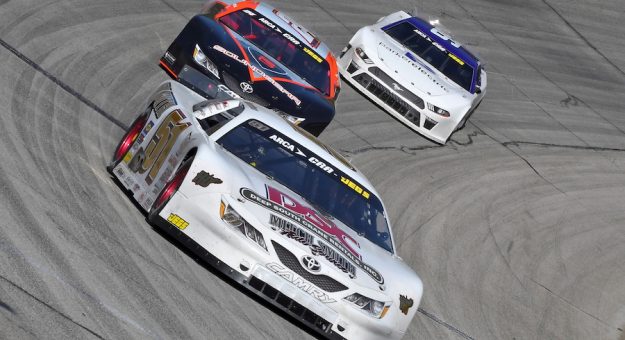The history of the Glass City 200 can be broken up into three phases — the early years, the Outlaw Super Late Model era and the Twin 100’s.
We’ll take a look at each iteration of the marquee event in a three-part series, going from the early days of the Glass City 200 to the new edition, the first as a template-bodied super late model event.
Part One — The Early Years
ARCA founder/President and Toledo Speedway Promoter John Marcum brought the Glass City 200 to life, with the inaugural event held on October 20, 1968. Michigan’s Joy Fair took the lead on lap four from Ron Grana and dominated the rest of the race to become the first-ever Glass City 200 winner.
Jim Clarke was second followed by Dave Sorg, who would win an inaugural marquee race of his own two years later at an event called the Winchester 400. Fair would come back and dominate the early running of the 1969 race, but would lose the lead on lap 78 and was out of the race just after halfway with a clutch failure.
Jerry Spear appeared to be on his way to the win before running out of fuel with 29 to go, turning over the lead to Joe Ruttman. Ruttman coasted to his first Glass City 200 win, shocking the field in what was considered an upset.
The 1970 race saw a different format, with split 100-lap races and the overall winner determined by the combined finish of the two races Bob Senneker dominated the 1970 event, winning both races and being declared the overall winner. He became the first two-time winner a year later after a second in the first segment and a win in the final segment.
The most dominating performance in Glass City 200 history took place in 1972, when Danny Byrd led all 200 laps and won both races. Ruttman finished second once again, ahead of Bud Pingston.
Ruttman returned in 1973 piloting the No. 1 usually driven by Joy Fair after the inaugural Glass City 200 winner was injured in a wreck at Toledo in July of that year.
Ruttman would take the opportunity to drive the potent Bob Gillean-Russ Wainscott machine and make the most of it, leading 151 laps and winning the overall race over Ed Howe, who was driving Jim Bickerstaff’s machine after a wreck in the first race. The win in the first 100-lap race went to Artie Summers.
The largest field of cars the Glass City 200 has seen converged onto Toledo for the seventh running of the event, with 76 cars making the trip to the half-mile. It would be a runaway for John Anderson, who led 188 of 200 laps in the Stan Yee No. 33 and took the win over Senneker and Randy Sweet.
He swept the two 100-lap races in the process.
The 1975 race saw Michigan legends Joy Fair and Bob Senneker pick up race wins, but neither driver would be named the overall winner. That would go to Jim Bickerstaff, who finished second and third in the two races and became the first driver and one of only two from Ohio to win the Glass City 200.
Ed Cooper won the biggest race of his career in the 1976 Glass City 200. He finished second to Joy Fair in the first 100-lapper, then led all 100 laps in the second race while Fair fell out with mechanical issues. Artie Sommers and Ricky Knotts rounded out the podium.
Bob Senneker returned to the Glass City 200 in 1977 and won it for the third and final time. He was on his way to the win in the first 100-lapper before Bill Daniels blew a motor on the final lap and Senneker spun in the oil, handing the win to Ed Cooper. Senneker came back and led all 100 laps in the second race to take the second 100-lap win and overall win.
Cooper was second and Joy Fair and Randy Sweet tied for third.
The Glass City 200 would go away after the 1977 race with the sale of the track. John Marcum’s grandson and current ARCA President Ron Drager would buy Toledo Speedway in January 1999.
He and Detroit-area businessman Roy Mott teamed up and brought back the Glass City 200.
